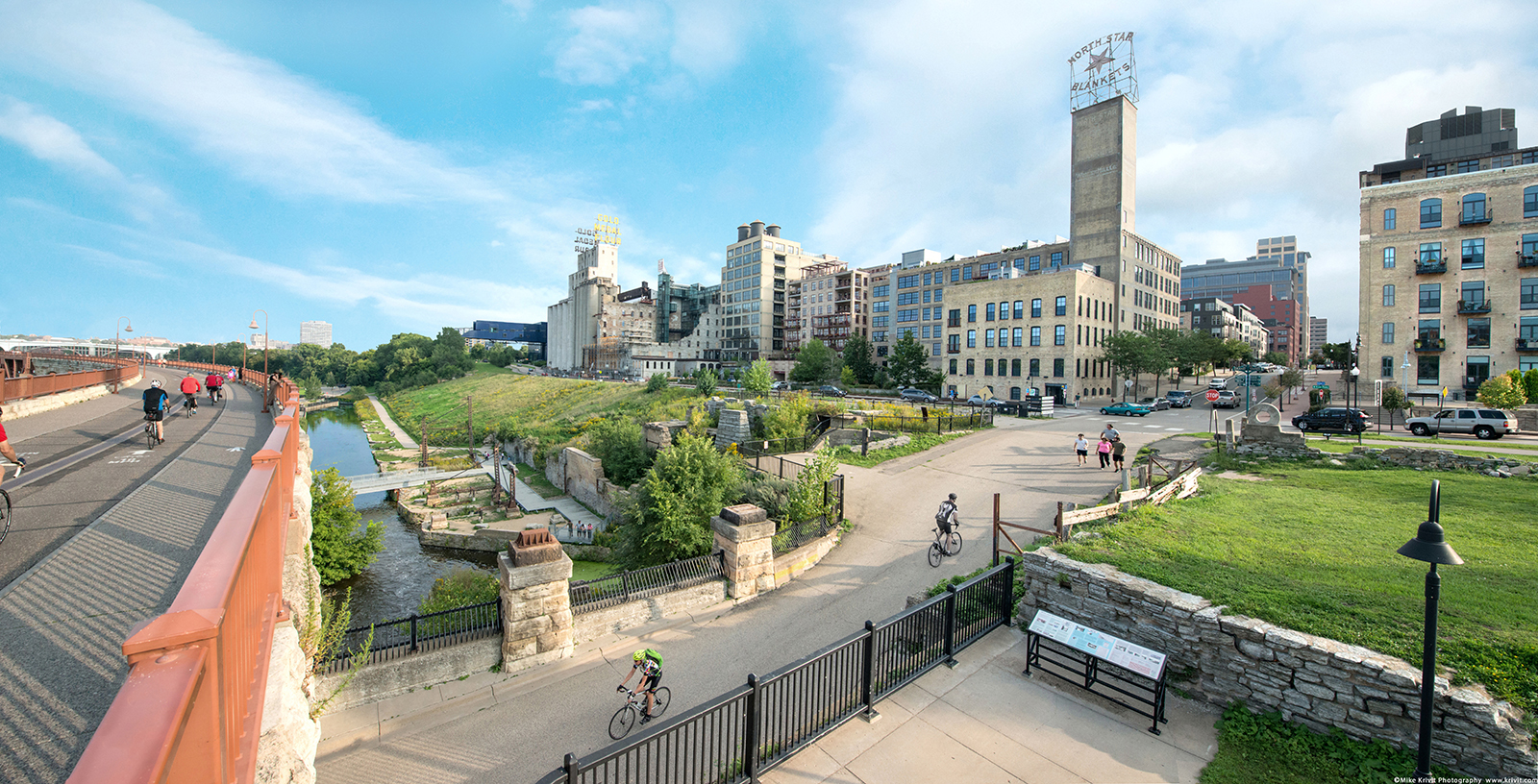Heritage Preservation

Heritage preservation seeks to protect noteworthy buildings, structures, objects, and landscapes (“historic resources”) that together form the built environment. Protecting buildings in a city that is always changing can be challenging – and the City of Minneapolis has been experiencing change since its early settlement and will continue to transform well into the future. These changes occur as part of the natural evolution of a city and as responses to property owners’ needs, economic booms or busts, and community desires, among other reasons. An essential task of heritage preservation in Minneapolis is to manage this transformation so the physical attributes of the city reflect its history and cultures, and so all residents have a sense of belonging and access to a cultural anchor. Preservation can not only celebrate who has lived in Minneapolis in the past, but also reflect who lives here today.
The field of heritage preservation is relatively young. While preservation work has deep roots, the National Historic Preservation Act did not become law until 1966, and Minneapolis’ Heritage Preservation Commission was not formed until 1972. Preservation work continues to evolve and mature. Historic buildings are no longer treated only as museum pieces, isolated from the people whose histories they embody. Today, new development projects are capitalizing on the sustainable value of reuse and successfully incorporating historic resources into their plans, ensuring the ongoing vitality of some historic structures. The identification and documentation of historic resources is more responsive to community concerns and acknowledges the need to better reflect a broader spectrum of cultural communities, communities of color, indigenous communities, and other communities that have traditionally been underrepresented. However, more changes lie ahead for the work of preservation.
A function of heritage preservation that’s becoming more relevant is its ability to help residents see themselves and their cultural identity within the city and empower them to more fully participate in civic life; thus, it’s critical for public engagement to include all interested groups in the preservation process, especially those whose history has been marginalized and whose places suffered deliberate disinvestment and removal. Minneapolis will work to ensure that residents of all cultures and backgrounds will have access to preservation resources while experiencing the economic, sociocultural, and emotional benefits of preservation.
 Policies
Policies
10 Policies relate to this topic. Click on a policy below to learn more about it.
Heritage Preservation Outreach
POLICY 91
Identify and Evaluate Historic Resources
POLICY 92
Intrinsic Value of Properties
POLICY 60
Stewarding Historic Properties
POLICY 93
Heritage Preservation Regulation
POLICY 94
Housing Quality
POLICY 47
Heritage Preservation Financial Incentives
POLICY 95
Cultural Heritage and Preservation Recognition
POLICY 96
Cultural Districts
POLICY 34
Place-based Neighborhood Engagement
POLICY 100

